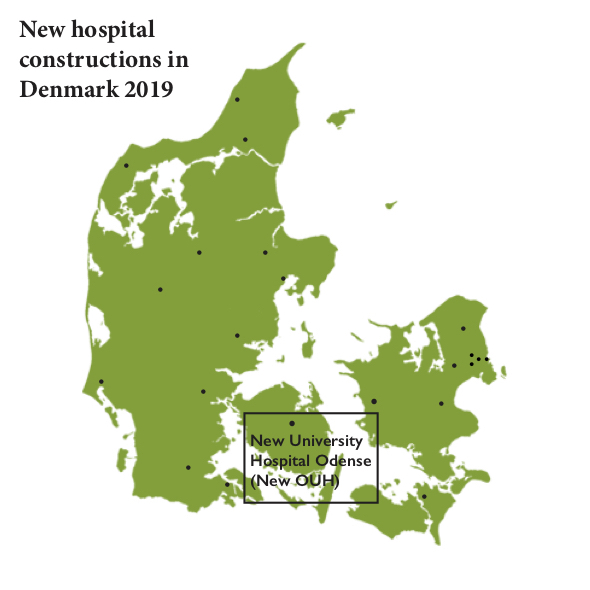(Photo by JV CMB/Itinera)
The Scandinavian region is globally exceptional for its free access to health care. Denmark is investing significant capital and resources to build new and innovative hospitals. In Odense, the site of the University of Southern Denmark, a new university hospital is being integrated for the first time into the larger university campus. The hospital will be a modern welfare institution based on the principles of Scandinavian Design, an offshoot of the Bauhaus school, which prized minimalism, simplicity and functionalism. While the university hospital in Odense will be completed in 2022, other innovative hospitals have already been built in the region. Most notable is the new psychiatric hospital in nearby Slagelse, where light, nature, and poetry have created a unique environment for treatment and recovery.

(Photo by Karlsson arkitekter VLA / Jens Lindhe)
The objective of this CHCI Summer Institute is to investigate how space, place, and design might interplay with individualized and compassionate health care. Space, along with its less abstract and more social corollary, place, are critical terms in the formal study of literature; meanwhile, the architectural concept design has newly entered a broader disciplinary lexicon to simultaneously suggest method, process and form. We want to consider the role that space, place and design play in health care and aesthetics.
- What can medical humanities learn from theories of space and place?
- How might the notion of a “poetics of space” transform how we think about the institutional settings of treatment and healing?
- How is a sense of space distinguished from the “actual” places in stories of illness, death and/or healing?
- What is the interplay between space and time in stories of illness, death, and/or healing?
- How do the perception and experience of space and place change across historical time and cultural geography?
- How does modern health care design take into account disabled or sick bodies and peoples?
- What is a “healing architecture”?
- And what are the more pragmatic effects of space, place and design on the delivery of health care?
This conference will investigate these and other broad questions about the complex relationships between spatiality, illness, humanities and health care.

